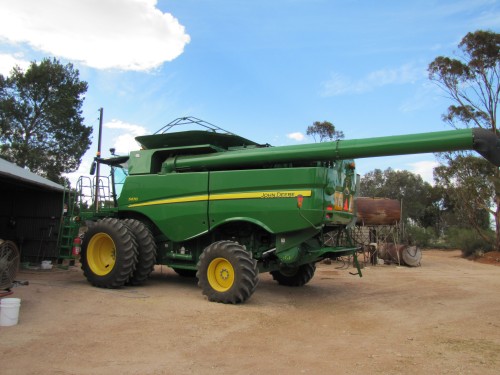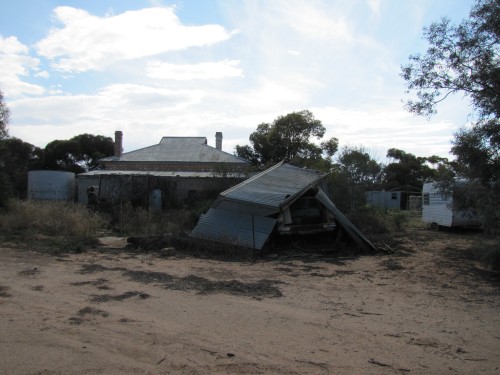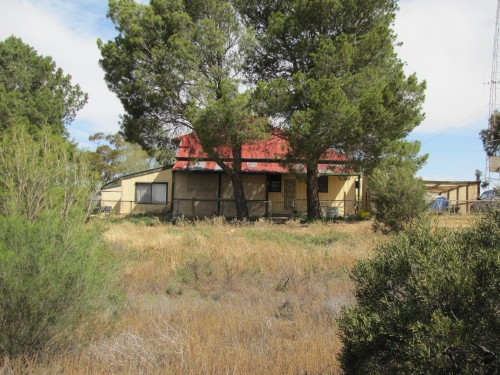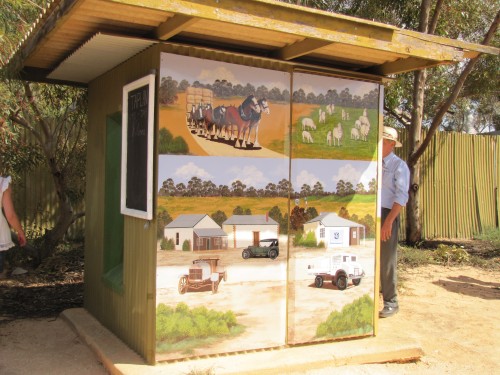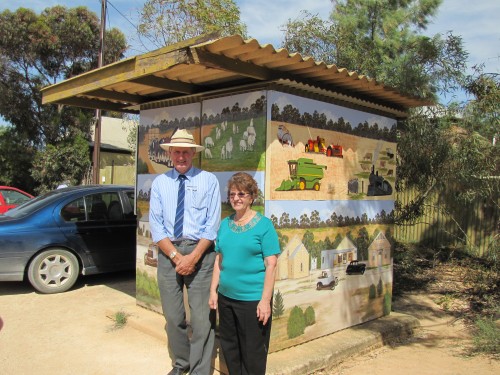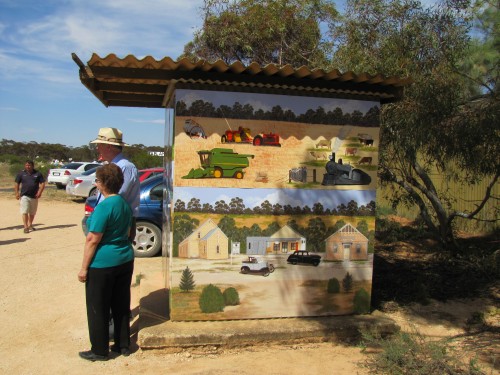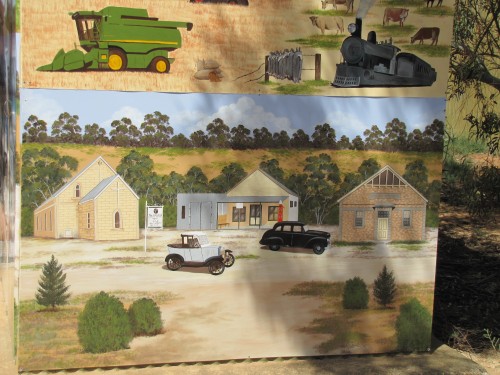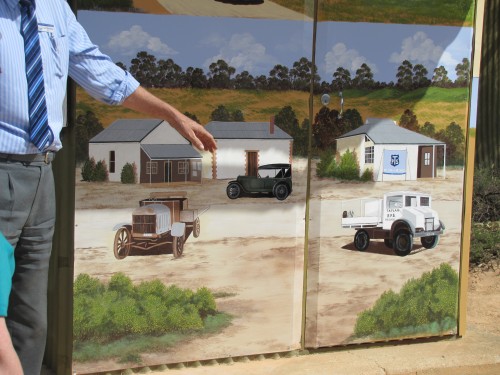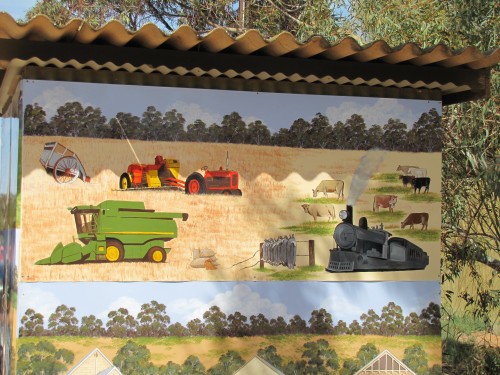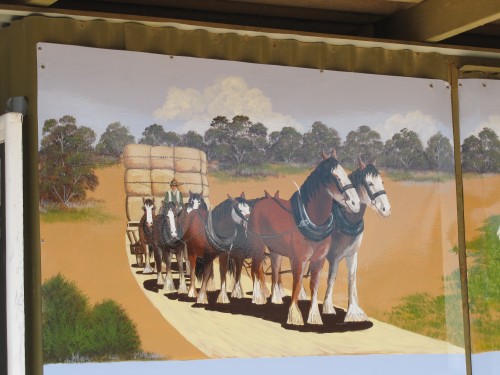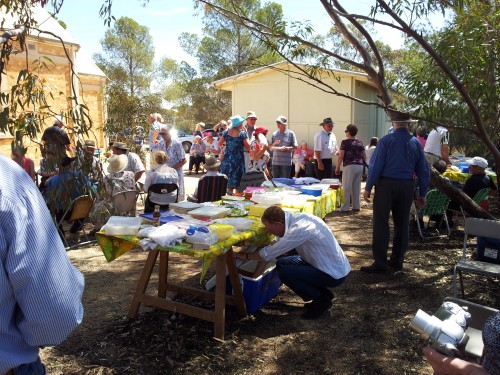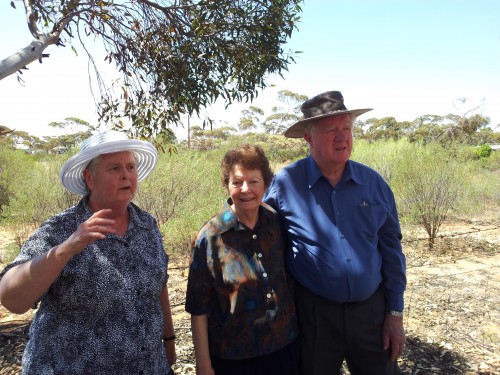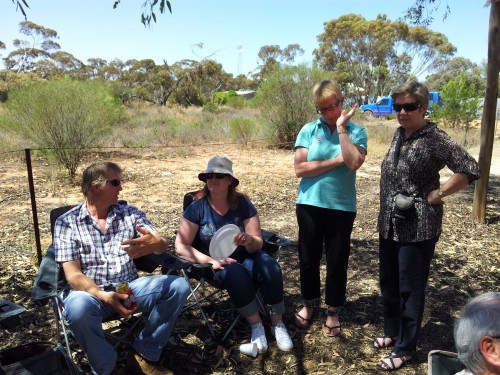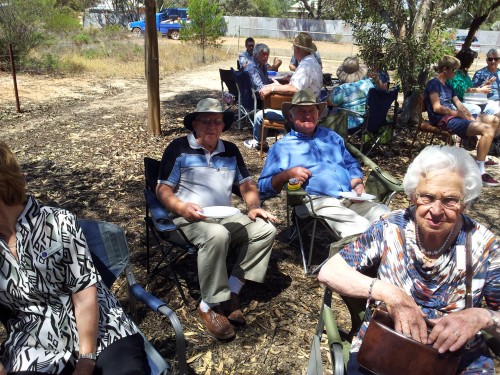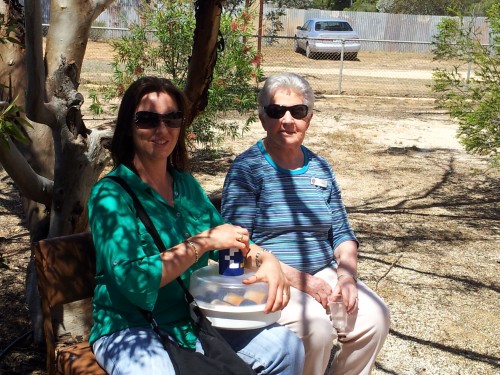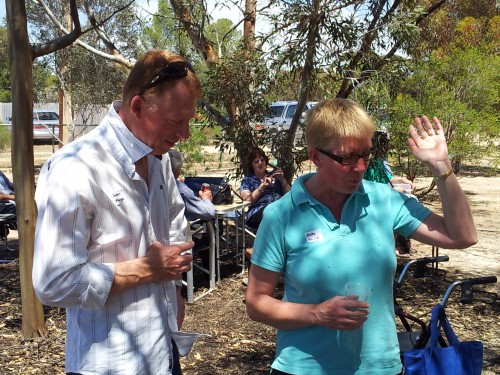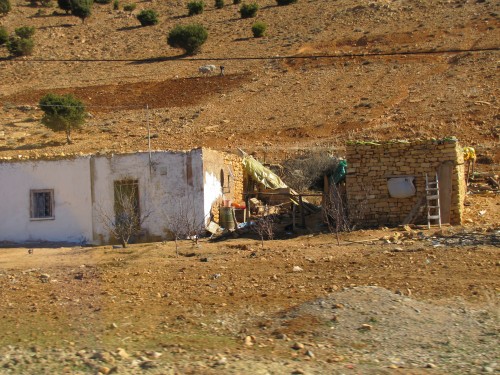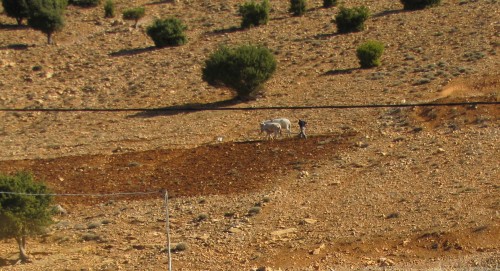Happy New Year
HAPPY NEW YEAR
to all of my readers.
Yes.
I realise that I am over a week late in giving these greetings. Better late than never, I guess.
In reality, I have been very busy enjoying life, family and the great summer weather we have had here in South Australia since Christmas. Before then we had some terribly hot weather. It was far too early in summer; we usually get weather like that in late January and February. Not this time around – it set all kinds of records. On many December days Adelaide was the hottest city in the world.
I haven’t had the chance to do much travelling over recent weeks. One exception was a day trip to the farm where I grew up. The farm is now owned by my nephew. This is near Loxton here in South Australia. We had a family get together over lunch. It was great to get many on my side of the family together, especially seeing my son and his family were over from Sydney.
Speaking of my son – he has visited us in the last few weeks on a number of occasions. This is always great because our grandchildren love coming here to Murray Bridge. They love spending time with me – and playing with me in our swimming pool. Trouble is – they really tire this old fella out. I need plenty of grandad naps to recover.
Tomorrow we travel to Peterborough in the mid-north of our state so that we can have a family get together on my wife’s side.
Stayed tuned – more articles and photos of our travels will be coming up here on this site in the coming weeks and months. Meanwhile, you can enjoy articles about my travels by looking at my archives here.
Trevor
Taplan Primary School
During the Taplan Railway Centenary celebrations in October 2013, I took a wander through the small town where I grew up in the 1950s and 60s. One of the buildings which took some of my attention was the former Taplan Primary School, now a private residence, shown in the photo above. Taplan is a small town some 30km south-east of Loxton, in the Murray Mallee region of South Australia and only 8km from the Victorian border.
This school opened in the early 1900s but I am not sure when it closed, possibly in the 1970s. I can’t find any references to its year of operating online but I do have a history book on the town at home – but I am writing this in Sydney – two days’ drive away. (I will update this next week.) Update: The school shown in the photo above opened in 1927 and closed in 1967. Previously a school was conducted in the galvanised iron room at the back of the Institute Hall from 1917 until 1928.
When I attended the school in the 1950s this was a thriving school with – if my memory serves me correctly after all these years – an enrolment of between 30 and 40 children. I seem to remember that it catered for even more before I started, but numbers gradually dwindled to fewer than a dozen before closing permanently. For most of the time, the school operated it employed only one teacher for all seven grades in the one room. For a brief period during my schooling, there was a part-time second teacher, who just happened to be a second cousin.
The school population came from the few houses in the town and the families of the workers on the railway maintenance gangs. By far the bulk of the students, however, came from the surrounding farming community. As farms were amalgamated families moved elsewhere. Other families chose to send their children by bus to the schools in Loxton, especially the newly opened Lutheran School. This eventually caused small schools like Taplan to close.
I have many fond memories of my days in primary school. My teacher, Mr Peter Evans, was in fact, the only teacher I had during my entire primary schooling. I enjoyed his style of teaching so much that he inspired me to become a teacher. I served in a variety of South Australian schools for 35 years until my retirement in 2004. He inspired a lifelong love of learning, reading and the environment.
The school grounds were extensive, with a large gravel covered play area which hosted many great cricket and football matches. The playground equipment was basic: 2 swings, a large see-saw, a zig-zag and some monkey bars for climbing. The lack of equipment did nothing to quell our imagination, though. The playground extended into a 5 acre (2ha) patch of mallee scrub, a great place for adventures of all kinds, from hide-and-seek through to pirates and western sagas and the occasional mini world war. Like most children we let our imaginations soar in all directions, creating games on the run.
Next to the main playground the parents’ association had created a vegetable garden. We had regular lessons in gardening and each student had their own plot to grow whatever they liked. I loved growing carrots, beetroot, turnips and a range of other vegetables. When I picked the results of my labours I was so proud taking home the produce for the family to eat. These skills carried over to the home patch of vegetables where I regularly helped my mother. Strangely, this early interest in growing vegetables has not fully extended into my adult life, except the times when I help my wife in the garden. I still enjoy working in the garden – as my back allows – but it seems not to be a high priority these days.
One last memory of my time at this school: the 40-metre strip of roadside verge between the main street and the school property was the scene of an annual tree planting ceremony. On Arbor Day many of us would plant a new tree or shrub in this nature strip. For many years this plantation thrived and made a great addition to the local town environment. Since the school has closed this plantation has deteriorated through neglect. Many of the trees have also died out through lack of watering; the Taplan summers can be very hot and dry and some trees were inappropriate for the region’s climate.
Updated 30th December 2016.
Taplan mural paintings
As a part of the Taplan Railway Centenary celebrations in 2013 there was special mention made of the new murals painted on the telephone exchange building. This small structure, shown in today’s series of photos taken on the day, replaced the old manual telephone exchange in the nearby post office many years ago. This building also doubles as a mail centre, the letters being sorted regularly into a handful of post office boxes in the side of it.
When I was growing up in the 1950s and 60s I would walk past this spot twice every day on my way to and from school a few hundred metres away. Behind this modern structure is the old post office where I would stop every day on my way home to collect the mail from a window, behind which the post master sat. His job every day would be to sort the few dozen letters addressed to residents in the area. He also manned the manual telephone exchange, connecting incoming calls to the number being called.
The phones in the homes of the district were typical of many used throughout rural Australia of that era. A bulky wooden cabinet hung on the wall in our dining room, with a large mouthpiece and a cord attached to an earpiece. When there was an incoming call, the phone would ring loudly and to answer one picked up the ear piece from its cradle and spoke into the mouthpiece. The person manning the exchange then connected the caller. To make a call one would pick up the earpiece and turn a handle, alerting the person in the exchange that you wanted to make a call, which they then connected for you. My parents would be astounded by the modern mobile phone and the many things one can do on one.
In the photos below I have show the new murals from different angles. One photo shows the artist and the Mayor of Loxton Waikerie who declared the murals open. The paintings, based on local scenes and local farming equipment down through the years, show typical scenarios of life in the Taplan region.
Taplan Railway Centenary Celebrations part 2
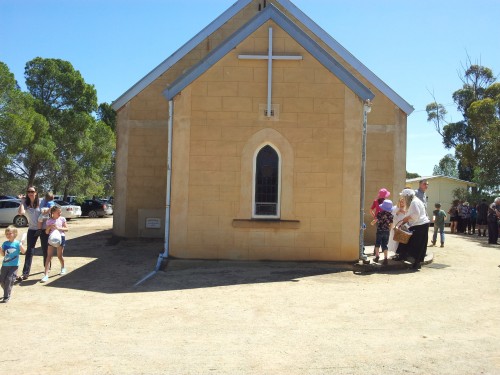
St John’s Lutheran Church, Taplan, South Australia
Following on from what I wrote yesterday I would like to share more photos taken on the occasion of the Taplan Railway Centenary Celebrations held in October 2013. As I said yesterday, a special church service was held in the morning. After the service we all gathered under the shade of the eucalyptus trees in the grounds of the church for a good old, no holds barred, traditional country style church lunch.
The trees planted many years ago were very much appreciated. The temperature was around the 30C mark and we were just coming out of a coolish winter and weren’t yet ready for our usual summer heat. Another problem was actually eating the food set out so invitingly on the long trestle table (see below). True to form, the locals came out in force – not the local people, mind you. I’m talking about the local bush flies. Sticky little insects, they are, and very, very persistent. Open your mouth a mere millimetre and they will get it. All good protein, I’m told, though I somewhat question that wisdom.
Despite the handicap of having to be very cautious while eating, the lunch was most appreciated and very filling, quite the usual delicious food served up on these occasions. I have a sneaking suspicion that some folk try to outdo everyone else in the food preparation stakes. I don’t mind; it’s all good.
As a little aside, I’m worried about my niece’s husband Peter as shown in the photo above. Not content with the sumptuous food dished up on the table, he has to go scrabbling about in the cool boxes below the table. No accounting for taste, is there?
The folk who came for these celebrations came from all over, some travelling long distances. It was great to get together with many people I had grown up with, attending the local school and also the Sunday School in the Lutheran Church there. My family were well represented at the event. The photo above shows (from left) my wife Corinne, my sister in law Jean and one of my brothers Laurie.
It was also good to see many of the next generation present at these celebrations. In the photo above (from left) are my nephew Mark, my daughter Rose, and my nieces Judy and Barb. It was great getting them all together, even if it was only for a few hours. Such occasions are now rare, unfortunately.
The photo above features another of my brothers, John, formerly a long-term farmer in the district. He bought the family farm from my father when he retired. My nephew now works the farm which is just a few hundred metres from where this photo was taken.
Subsistence Farming in Morocco
Simple homes like the one shown above are a common sight in the poorer parts of rural Morocco. At this point we were still travelling through the Atlas Mountains south east of Fes. As you can see in the picture, the terrain is very rocky all around. This means that there is no shortage of building materials – cheap, handy, easy to use and effective. Interestingly, the farmer is in the process of improving the look of the house by applying what looks like a form of whitewash to the walls.
Despite the remote location of this farm I notice that they do have a supply of electricity. I also note the satellite dish on the right hand side wall. In some of the towns such dishes could be seen in their hundreds, sometimes dozens on one apartment building alone. If you look carefully you can see the farmer ploughing the ground up the hill behind the house (see enlarged photo below). I have no idea what he was intending to grow. This was the middle of winter so he was getting ready for planting something in the early spring perhaps.
I noticed very few tractors in the poorer rural areas of Morocco. Donkey power was common, however, and this farmer was also using a donkey coupled with what looks like a mule.
